Launching a farm sim on Nintendo Switch in 2020 must be a daunting task. It’s tough to follow the indomitable act that is Animal Crossing, but if you’re going to try, it helps to do something your way. That’s the promise of Summer in Mara.
It’s a cutesy farm sim on the surface, but it does things decidedly different than its best-selling counterpart, such as focusing on a scripted story.
What makes the game unique is what could eventually make it worth playing, even for the most committed islanders of Animal Crossing. But in its current form, Summer in Mara doesn’t justify the vacation time for several reasons.
Summer in Mara Review: Summertime Sadness
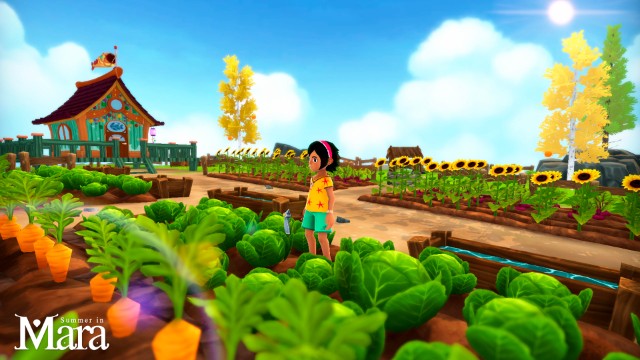
Summer in Mara may be categorized as a farming sim, but it’s not as intensive as some others in the genre. You’ll spend much more time running around on quests for other villagers than you will tilling soil and planting crops. Those are a part of Mara, but after the tutorial, they fade into the background.
As Koa, players learn the staples of the genre. Things like crafting recipes, planting seeds, and mining ore are all on the to-do list, and though completing these tasks is straightforward, the UI is often clunky and unintuitive, leading to frequently faulty button presses. This takes some getting used to and may likely slow you down for a while, even when making something simple, like the early recipe for orange juice.
Once Koa and the player have these mechanics down, the world opens up beyond her small starting island. Soon you’ll meet many more fantasy characters, most of them appearing as alien-sea-creature hybrids who lend the game a sense of welcome unfamiliarity.
Sadly, these characters hardly elicit any feelings beyond the reaction to their outward design. It’s strange too that characters never move from their spots. Everyone but Koa stands in place, waiting for you to talk to them. It’s eerie, perpetuated by an overall lack of sound design that leaves Mara feeling ghostly.
The game squanders what could’ve been an atmospheric quality, instead making me feel alone, despite the characters otherwise trying to seem so friendly.
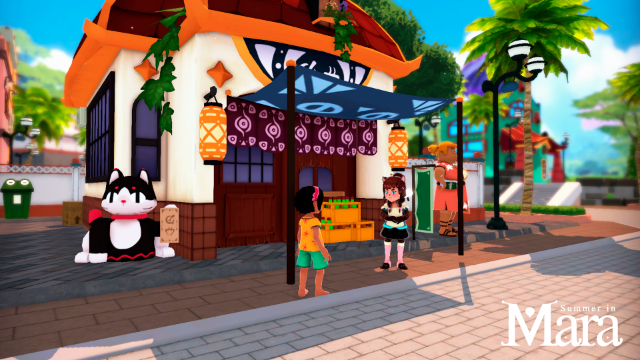
Some dialog simply doesn’t compute, either. The lack of voice acting doesn’t bother me, but the game’s dialogue often seems off. Early on, your grandmother instructs you how their world is one of symbiosis. If Koa is to take from the land, she must give back. Cut down a tree, plant a new one.
Now, that math doesn’t really make the world a better place. It more so just fills a hole you’ve dug yourself, but I was on board with the eco-friendly attempt anyway. But within the next hour of the tutorial, I was instructed to defy that message regularly.
Before you can get off the beginning island, you’ll need to chop down many trees, planting crops only to keep yourself fed. The game also never says anything about the fishing you do.
Of course, virtually all farm sims decline to inspect the inherent problems with fishing (like over-fishing, or simply stabbing animals in the face), but Summer in Mara told me it would be different, that it was going to care about that. But then it just… doesn’t.
Even if I forgave it for the mixed messaging and lifeless world, the issues don’t end there. One of Summer in Mara‘s best attributes appears right away. With full-motion Ghibli-like cutscenes, the world of Mara is hopeful and gorgeous, but when the cutscenes end, the world doesn’t look nearly as lovely. As can often be the case with Switch games, some of what’s missing in visual fidelity hides in portable mode, but even there, a haze leaves blemishes on its colorful world.
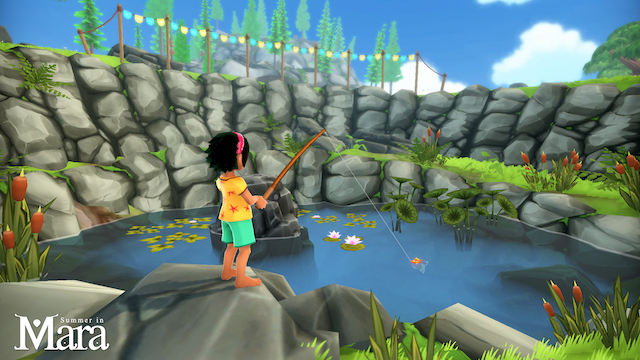
Questing is regularly annoying because there is no guide arrow. Many times, a quest directs you to visit a place you’ve never heard of or meet characters it doesn’t lead you toward. This results in some frantic exploration until you find the small marker above the right person, or approach the proper landmark to finally find the interact option you need.
There’s also a light survival system that feels almost randomly implemented. If Koa does not eat, she passes out and wakes up in her home with some stamina back — but not much. However, it’s quite easy to stay fed, so there’s really no reason for this mechanic at all. It just becomes a lifebar you must engage with every few minutes or her place in the world is briefly reset.
The more linear focus on story is a welcome side-step from the genre’s typically loose structure, but Summer in Mara never capitalizes on any of it for these reasons. It’s regularly a chore to advance the plot.
Sadly, even if it did deliver a story more enjoyably, it’s hampered by bugs too. In my time with the game, I got stuck on geometry often, UI options failed to disappear, requiring me to restart the game. Though I thankfully avoided the same fate, I heard from another journalist that they had to get the studio to reset their entire saved game data.
This was because the game failed to let the player improvise how they tackled the quest log. Having done things in a slightly different order, they hit a game-breaking bug, and the game doesn’t allow you to create a new save, apparently. That’s the sort of thing that would be inexcusable with an otherwise great game, but Summer in Mara is far from great.
Summer in Mara Review — The Bottom Line
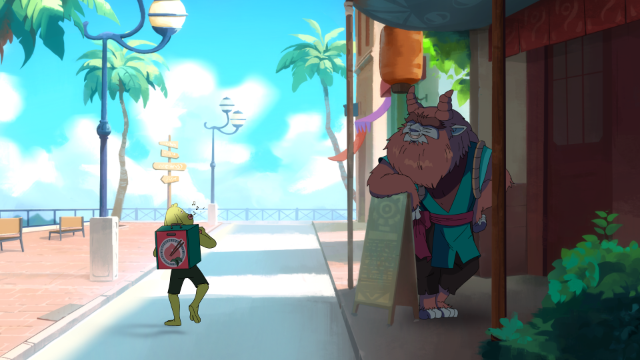
Pros
- Ghibli-like cutscenes are beautiful
- Music is soft and befitting of the island life
Cons
- Bugs are quite common
- Story is full of mixed messaging
- Locales are lifeless due to a lack of sound design and NPCs that hardly move an inch
- UI is clunky
- Survival elements feel out of place
Some patchwork could resolve several of Summer in Mara‘s issues. Not just the bugs, but things like poor UI design could be addressed, too, making Summer in Mara a better, but still flawed game. I hope it receives that attention. Beyond the Studio Ghibli-style cutscenes and some peaceful music fitting of the genre, there are no redeeming qualities today.
This genre is the security blanket of video games. Fans return to it for their soothing progress bars, friendly neighbors, and accessible mechanics. It shouldn’t be that a game like this causes frustration first and foremost, but that’s how I spent my summer in Mara.
[Note: A copy of Summer in Mara was provided by Chibig for the purpose of this review.]

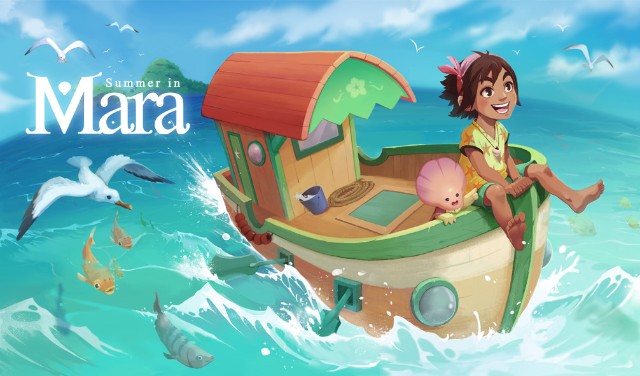





Published: Jun 15, 2020 01:49 am